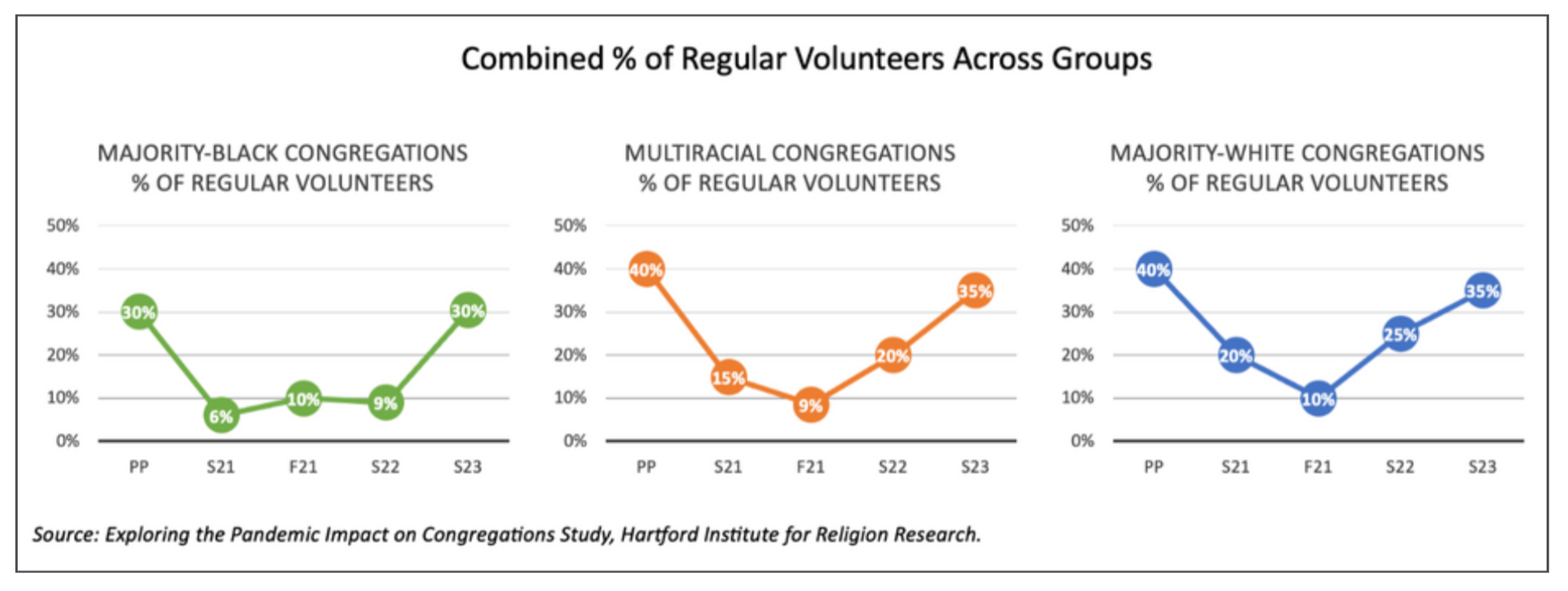Congregations reported a decrease in their local community activities from before the pandemic to 2023. While majority white congregations said their rate of involvement remained constant, the percentage of majority Black and multiracial congregations agreeing or strongly agreeing that they were civically engaged decreased 21% and 12% respectively.
Congregations of all racial groups saw a significant decline of volunteers by the summer of 2021. Black congregations, by 2023, reported a return to the pre-pandemic level of about 30% of their congregation serving as regular volunteers. However, multiracial and majority white congregations, whose volunteers were near 40% before the pandemic, reported just 35% in 2023.
“Combined % of Regular Volunteers Across Groups” (Graphic courtesy of HIRR)
The report, which contrasted congregational life today with that pre-pandemic, also looked at clergy well-being over a two-year period.
Watts, who also runs a Black church’s nonprofit in Connecticut, said the pandemic exacerbated the already extensive roles of clergy who marry, counsel and bury congregants.
“I think it’s too big for any one person or any one institution,” she said, suggesting the need for greater partnerships in congregations and the community to support clergy.
In fact, the report notes that clergy across the board, regardless of their congregation’s racial makeup, were more likely to have thoughts about exiting their congregations in 2023 than in 2021.
“The decreased well-being among clergy and increased consideration of leaving ministry or one’s faith community is a shared burden among all clergy, yet slightly less dire for Black Christian congregational leaders,” Watts stated in the report. “Black clergy’s commitment to their call and subsequent congregations’ resilience throughout the pandemic has been and continues to be unwavering.”
The findings are based on data from the Faith Communities Today and the Exploring the Pandemic Impact on Congregations study. Sample sizes for Black majority congregations range from 140 in an EPIC study to 774 in a FACT study; for multiracial congregations, from 841 in EPIC to 2,623 in FACT; for white majority congregations, 2,802 in EPIC to 10,073 in FACT.
The estimate for the margin of error is plus or minus 4 percentage points.
This article originally appeared here.


